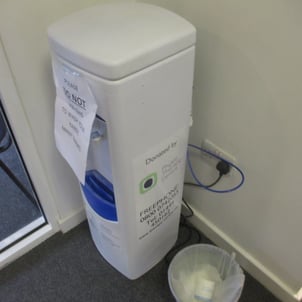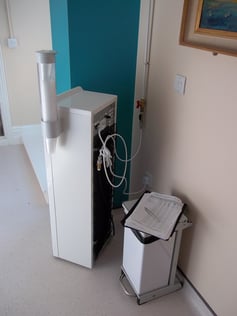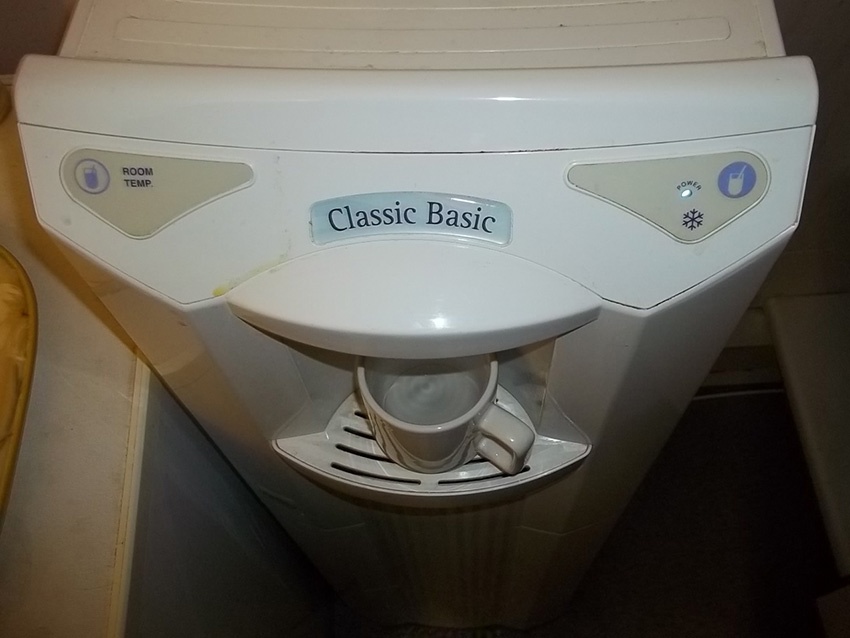Despite Summer seeming a very long way off post the Christmas period, adequate indoor hydration remains necessary throughout the year.
Drinking Water & Legionella
There continue to be regular requests for additional drinking water facilities to help staff, patients, and visitors remain comfortable and hydrated within healthcare environments. However, as we know, water coolers and other point-of-use water outlets can cause problems in terms of bacterial growth, and certain, essential precautions are required.
This blog focuses on mains-fed water coolers, as bottle-fed systems are not generally recommended within healthcare environments.
Is there a problem with your drinking water?
Point-of-use water coolers and other drink dispensers are commonly a ‘nice to have’ item that may improve the local environment for building users. However, there are potential drawbacks associated with water hygiene and infection control.
In many cases, water cooler provision may not even be necessary, when local building/department kitchens invariably tend to have a mains cold water tap fitted.
What are some of the problems associated with water coolers?
-
 Resource implications - They are not ‘fit and forget’ items! In addition to the initial purchase cost, they require daily cleaning, emptying of drip trays, etc., regular servicing, and replacement and disposal of consumables;
Resource implications - They are not ‘fit and forget’ items! In addition to the initial purchase cost, they require daily cleaning, emptying of drip trays, etc., regular servicing, and replacement and disposal of consumables; -
Infection risk - Some areas are not suitable for water coolers, due to the risk of cross-contamination (e.g., laboratories and toilets) and increased risk of infection (e.g., neonatal and intensive care units). Infection Control teams should be consulted before the procurement of any such water cooler;
-
Poor water quality - This may be influenced by the provision of a lack of suitable water supply and adequate drainage arrangements. Units should also ideally be sited where they are likely to receive frequent use, ensuring a regular flow of water through the device and associated pipework. Infrequent use is a common cause of unsatisfactory water quality.
How should I manage my water cooler?
-
Policy – Determine what the organisational policy is for water coolers. This should incorporate the standards that will be applied, procurement arrangements, the approval process, who will be responsible for the finance and upkeep of the units, records to be kept etc.
The aim should be for installations to be permitted or rejected based on a suitable legionella risk assessment completed by a competent person/s (usually the members of the Water Safety Group (WSG)). The principle of ALARP (as low as reasonably practical) should be applied; - Procurement – Establish robust controls to ensure that unauthorised drinking-water facilities cannot be purchased or rented without the express approval of the WSG. Work with procurement teams to ensure their understanding of this type of installation and the associated risks;
- Application process – Consider developing an application process with defined approval criteria, so that when a request for a device is received, it can be dealt with systematically (this does not eliminate the need for a risk assessment, but it could speed up the process). Criteria could include:
-
- Is there a suitable source of water to supply the equipment within a short distance of the proposed site and upstream of frequently used outlets?
- Is there a suitable source of water to supply the equipment within a short distance of the proposed site and upstream of frequently used outlets?
-
-
Has the person responsible for the daily cleaning of the device been identified and appropriately briefed regarding their responsibilities?
-
Have the department who will undertake the daily hygiene regime been identified, received sufficient Legionella training and are they deemed competent?
-
Has the finance for the purchase of the unit and the ongoing service contract been agreed upon (i.e., who’s going to pay)?
-
What about Legionella Risk Assessments?
When it comes to the risk assessment of each proposed installation, a site survey will be required (see below). Local risk assessments should consider:
-
The susceptibility/vulnerability to infection of all who may be exposed to the water (including ice);
-
Quality of the incoming water supply;
-
Frequency of use (e.g., will it be sufficient to avoid any deterioration in water quality because of excessive water age);
-
Carbon filtration in these devices, which are a high nutrient source for bacteria;
-
Ease of cleaning/sanitisation & maintenance of the device.
Thinking about the installation, a detailed site survey should be carried out in advance of each installation to establish the precise location and practical requirements (this survey will also help inform the risk assessment). The survey should:
-
Confirm the availability of a suitable water source, electrical supply and drainage arrangements;
-
Establish the suitability of the installation in respect to other health and safety considerations;
-
Check for factors that may affect water quality, such as localised heat sources.
Once an individual application has been agreed upon, always ensure that water coolers and other point-of-use devices are installed following these general guidelines:
-
The unit must be connected within 3 metres of an existing drinking-water supply and upstream of a frequently used outlet;
-
Installers should be suitably qualified and always work under the supervision of the Trust’s Authorised Person (Water), who will ensure that the requirements of the Trust’s Water Safety Plan, risk assessment, and any further instructions from the WSG are implemented;
-
All materials and fittings used must be WRAS (or equivalent) approved.
Stay safe, stay hydrated, and enjoy the Summer!
Feel free to reach out if you have any questions about this blog or if you would like to consult with one of our experts for further advice on water hygiene.
Editors Note: The information provided in this blog is correct at the date of original publication - July 2022. (Revised January 2025)
© Water Hygiene Centre 2025









